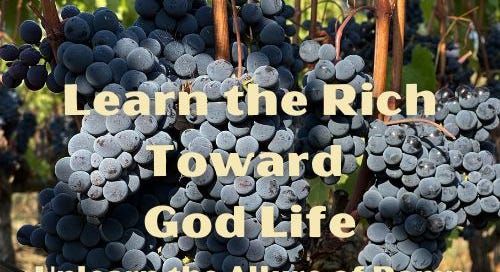This is one more chapter I’m considering sliding into the next book, “The Art of Unlearning” (though I now know that won’t be the actual title). It’s truth is something I can’t remind myself of enough. We’ll break it up into two different posts.
Years ago, some dear friends of ours took Lisa and me on a canal cruise through the Burgundy area of France. Our friends are “foodies” in the restaurant business, so they were particularly excited about visiting a vineyard where the grapes for the most expensive wine in the world, Romanee-Conti, are grown.
For context, I know as much about wine as I do quantum physics, which is to say, nothing. So the romance of the moment might have been lost by the skepticism of my mind.
We drove up to the rows where Romanee-Conti grapes are cultivated. There was a dirt road, maybe eight feet wide at most, dividing the rows where grapes for Richebourg wines are grown.
Romanee-Conti is such an exclusive wine that to purchase some you often must first buy a case (twelve bottles) of Richebourg wine. Romanee-Conti can set you back eight thousand euros a bottle, though some have been sold at auction for over $20,000 a bottle. Richebourg seems like a bargain in comparison, typically going for around one to two thousand euros a bottle. In that case, you must spend around fifteen to twenty thousand dollars to “get” to spend another ten thousand dollars for that one precious bottle of Romanee-Conti wine.
While our guide was talking, my skepticism about the price disparity between the two wines skyrocketed as I looked at how close the Richebourg fields are to the Romanee-Conti fields. “You mean to tell me,” I asked the guide, “that the grapes right here” pointing to Romanee-Conti “are eight to ten times better than the grapes that are there?” (pointing six feet away to the next row).
“Well,” he admitted, “the grapes on that end vine may not be all that different from the grapes on the first Richebourg vine, but remember, they’re cultivated from the entire field and mixed together, and there really is a difference between the middle of the fields.”
I’ve driven through vast swaths of Texas and Montana and have seen fields of corn that could have accommodated a hundred fields of Romanee-Conti grapes. The vineyard we were standing in wasn’t that big, making me think the difference couldn’t have been that huge. Not eight times better, anyway.
Keep reading with a 7-day free trial
Subscribe to Simply Sacred with Gary Thomas to keep reading this post and get 7 days of free access to the full post archives.




